I recently had a chance to work on another Aquastar Regate, the first version from the 1960’s…
(Click pictures to enlarge)
I restored one of these a few months ago, and working on this one reminded me that I was going to write a post about how the sailing timer mechanism works. In previous posts I’ve described how the timer is supposed to be used (here if you missed it), and how the timer mechanism works in the later Lemania based model from the 1970’s (here).
To recap, the calibre inside this model is a Felsa cal. 4000N; a 18,000bph automatic calibre, modified to include the sailing timer. Like the Lemania based version, removing the dial and hands reveals the rotating disc for the timer…
The picture above shows the timer in “stopped” condition, in this state the disc is locked in position by the tension spring. When the pusher is pressed, the hammer moves under the disc contacting the pin on the underside of the disc pushing it around anti-clockwise 90 degrees until the red section is at the top and the 5 holes in the dial show red (inset).
Power for the mechanism is provided by the driving wheel which transfers power to the teeth on the disc, rotating it back to the stopped state in exactly 5 minutes. The tension spring ensures a smooth transition and locks the disc in place again when complete.
The driving wheel pictured above is mounted on the extended axle of the third wheel. Digging deeper into the going train you can see that the third wheel is actually two independent wheels on a single axle with a friction washer separating them (inset below)…
While the lower of the two wheels performs the normal function of a third wheel in the train, the upper wheel is responsible for providing both the power to the timer driving wheel, and to the centre second pinion. In normal operation both wheels rotate together due to the friction provided by washer between them, but when the pusher for the timer is pressed, the friction provided by the washer is overcome and the upper wheel rotates independently, also moving the second hand back to zero to start the countdown.
With the wheel train bridge removed you can see how the third wheel is connected to the centre second pinion…
This calibre has one more technical trick up its sleeve. When the timer is engaged it is essential that the second hand is returned precisely to zero to start the countdown, regardless of its position. This is made possible by the addition of a cam to the centre second axle, and beside it you can see there is a spring loaded lever. When the wheel train bridge is in place, this lever is pressed against the cam and stops the second hand in the zero position when the notch on the cam hits the lever. To give an idea of scale here, inset is a picture of the lever spring next to the head of a standard match.
As the only problem with this watch was a lack of servicing, so after a clean and oil it was back up and running again. The only thing left to do was straighten the second hand, and polish the cloudy crystal. Here’s the result…
Rich.
** Many thanks to Jamie Butterworth for letting me feature his watch on the blog. **

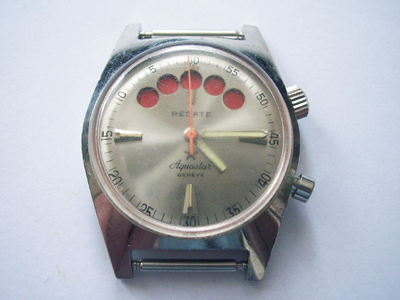
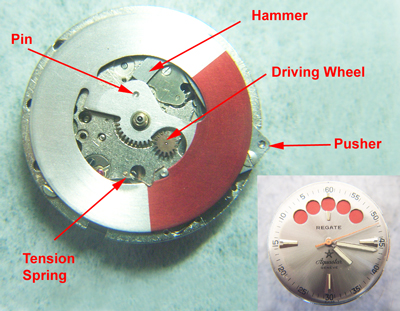
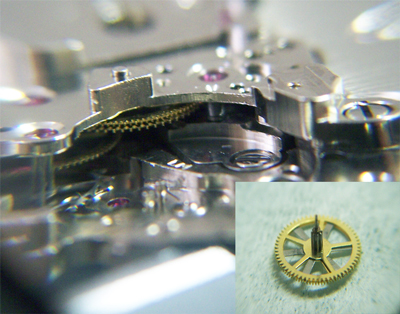
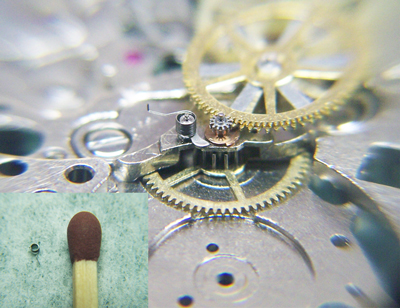
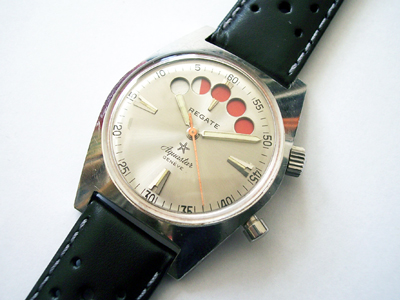
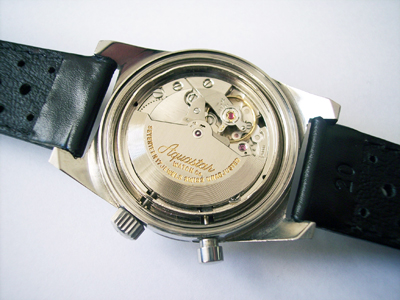
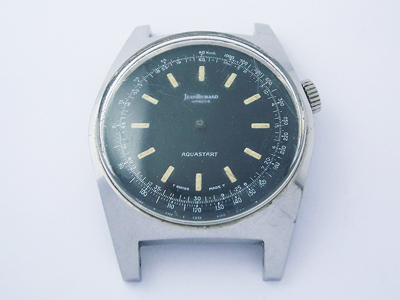
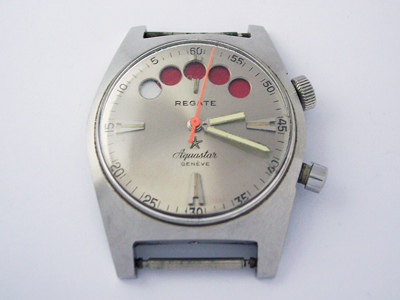
Hi guys.
I am looking for a third wheel for this watch.. I can’t find it anywhere. I find only the “standard” one with short shaft. Can you help me? Thank you
A great watch! I purchased one new in the 70,s when I was racing the Olympic class Tornado it came with a stainless steel strap. I have never had a problem with it and still have it. Mike.